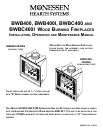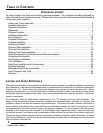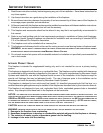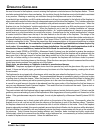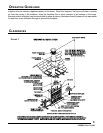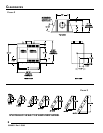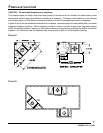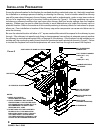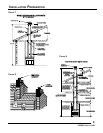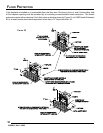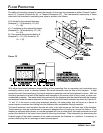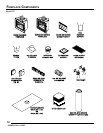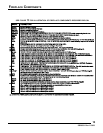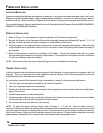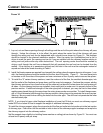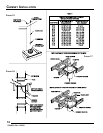Special offers from our partners!

Find Replacement BBQ Parts for 20,308 Models. Repair your BBQ today.

5
4
OPERATION GUIDELINES
As wood is burned in the fireplace, room air entering the fireplace is circulated around the fireplace firebox. This air
circulation protects the firebox from overheating. Air circulation through the fireplace must not be blocked or restricted
in any manner. Blocking or restricting air circulation through the fireplace can cause a fire hazard.
In residential type installation, an AK4 outside combustion air kit may be connected to the left side of the fireplace to
allow outside air to enter the firebox through a dampered opening in that side of the fireplace. This “outside combustion
air” feature reduces the room air used for combustion and prevents excessive heat loss from the room. When the
fireplace is in use, the fireplace’s “outside combustion air” damper connected to an AK4 may be opened to allow air
from outside to enter the fireplace firebox. When the fireplace is not in use, the “outside combustion air” damper
should be closed to prevent cold air from entering the firebox. An “outside combustion air” damper is open when its
control lever is up, and closed when its control lever is down. A control lever for the “outside combustion air” damper
is located inside the firebox near the top of the side firebrick on the left side of the fireplace. The design of the
fireplace allows the routing of the combustion air duct downward or horizontally to obtain the outside combustion air;
this permits flexibility in planning your installation. See Figures 24 thru 27 and their instructions for typical installation
of outside combustion air kits. Review the precautions and recommendations in this manual pertaining to outside
combustion air. Outside air for combustion is optional in residential type installations unless required by
local codes; it is mandatory in manufactured home installations. Use an AK6 outside combustion air kit in
manufactured home installations, instead of the AK4 offered for residential type installations.
Glass doors (model GD36B or GD36PB by Monessen Hearth Systems) may be installed to receive the maximum
benefit from your fireplace. For large fires, the maximum heating benefit from the fireplace will be obtained with the
doors open due to the high amount of radiant heat being emitted out of the front opening of the fireplace. With a
small fire, or before retiring in the evenings, it is best to operate the fireplace with the doors closed to prevent
excessive room air from being drawn up the chimney. When the doors are open, the mesh screens should be closed
to help keep burning embers from popping out of the firebox.
Glass doors are mandatory on fireplaces installed in manufactured homes.
WARNING: Fireplaces equipped with glass doors should be operated only with the glass doors fully open or fully
closed. If doors are left partly open, gas and flame may be drawn out of the fireplace opening, creating risks of both
fire and smoke.
The fireplace also is equipped with a flue damper, which must be open when the fireplace is in use. The flue damper
control lever is located inside the fireplace. The counterweighted damper is operated by simply pushing up to open
or pulling down to close the damper. When the fireplace is not in use, the damper should be closed to prevent cold
air form entering the chimney as well as preventing warm air in the room from escaping up the chimney. NOTE: It
is normal for a small amount of smoke to be released from the upper portion of the fireplace the first few times you
use your new Monessen Hearth Systems fireplace. This results from an oil residue on the metal. Open a door or
window to allow the smoke to escape.
The grate included with this fireplace helps to appropriately locate and contain the burning wood. Failure to use this
grate may cause overheating of parts of the fireplace and allow large pieces of burning wood to roll forward out of the
firebox. If the grate becomes warped or damaged, it must only be replaced by a Monessen Hearth Systems 055119
grate.
All fireplace chimneys are in direct contact with cold air on the exterior of the structure. Consequently, when the
fireplace is not in use, cold air can fall down the chimney of the fireplace to cool off the fireplace chase. Therefore,
the fireplace chase must be insulated to minimize the risk of cold air infiltration to the home. Even if the fireplace
chase is adequately insulated, this cannot completely ensure that cold air infiltration into the structure will be eliminated.
Cold air infiltration is a possibility with any fireplace or device that freely communicates with the air on the outside of
the structure. Today’s homes are more energy-efficient and, therefore, better insulated and tightly constructed.
Unfortunately, when air is removed from the house, as by a bathroom fan, or consumed by a furnace, additional air
is needed to replace the air consumed. Unless the additional air is
53D9031. Rev 1 03/03



